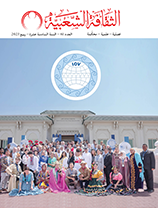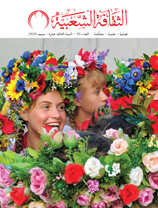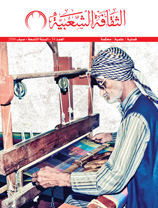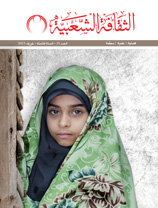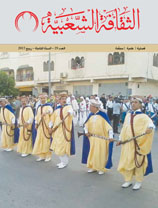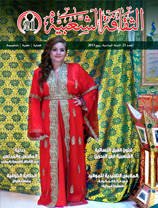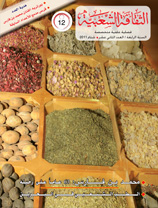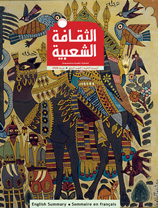Folk Heritage: Illegal Exploitation
Issue 38

I had the opportunity to attend the 7th UNESCO NGO Forum on May 3-5, and I learned about the experiences of the international non-governmental organisations (NGOs) affiliated with UNESCO.
Representatives of over 350 organisations attended the Forum. It was evident that most of the world’s countries are keen to preserve and protect tangible and intangible folk heritage. A great deal of consideration was given to attempts to make valuable cultural heritage into a commercial commodity for illicit material gain. In many countries, this is done very cleverly by exploiting the interest in heritage and using innovative trickery to mask illegal financial goals.
Some cultural projects have widely-promoted slogans, as a result of the negligence and ignorance of cultural bodies or of collusion with institutions and corporations, or in an attempt to flatter influential people.
It seems that folk culture is being promoted using national symbols that are altered, falsified and fabricated into stories with psychological or emotional impacts. These illegal acts of exploitation are dangerous because the strategy behind them is so clever. Because they draw inspiration from the nation’s heritage and bring this heritage to the attention of the new generation, these actions are welcomed, encouraged and, in some cases, even sponsored by governments and large corporations. There is a huge difference between artists who use heritage as a source of inspiration and people who distort heritage for commercial gain in full knowledge of the damage they are causing.
Material and non-material folklore are not static; by their very nature, they persist through the generations, but each generation adapts folklore based on life during their time period. Although heritage does change over time, it is not necessary for those who contribute to heritage to be aware of the natural changes that it undergoes. They co-exist with and are related to heritage.
Over a quarter of a century ago - perhaps in 1979 - the World Intellectual Property Organization (WIPO) warned that some people were abusing heritage. WIPO and UNESCO agreed to convene a meeting of government experts to draft an international convention to protect folklore from exploitation. I had the opportunity to participate in this meeting in Paris. After five days of legal and technical discussions, they agreed to create a legal document for an international convention to protect folklore.
The Convention criminalised any act that might amount to unlawful exploitation, and left each state to determine the penalty for such acts in accordance with its national constitution. Within 18 months, most countries, including some Arab countries, signed the agreement. However, there are still cases of clever, malicious and disrespectful exploitation.
The folk heritage of any nation is public national property. Any member of a nation has the right to approach heritage, whether by technical means, socially or in education as per the relevant laws that permit the use of heritage as a source of inspiration. In spite of the accuracy and transparency of the term ‘inspiration’, there is still confusion regarding creative works inspired by heritage and new and innovative work. Drawing on heritage as a source of inspiration is not an excuse for theft or fabrication.
With the support of a large Bahraini company, Mubarak Najem arranged some popular folk music for the instruments of the Bulgarian Symphony Orchestra. He was inspired by Bahrain’s musical folk heritage, and he reintroduced beloved songs to the new generation.
Great creative endeavours treat heritage with respect and appreciation without distorting or exploiting it and without media hype, while inauthentic work is promoted with a great deal of noise and shameful arrogance. “There is no power and no strength save in Allah.”
Ali Abdullah Khalifa
Editor-in-Chief











